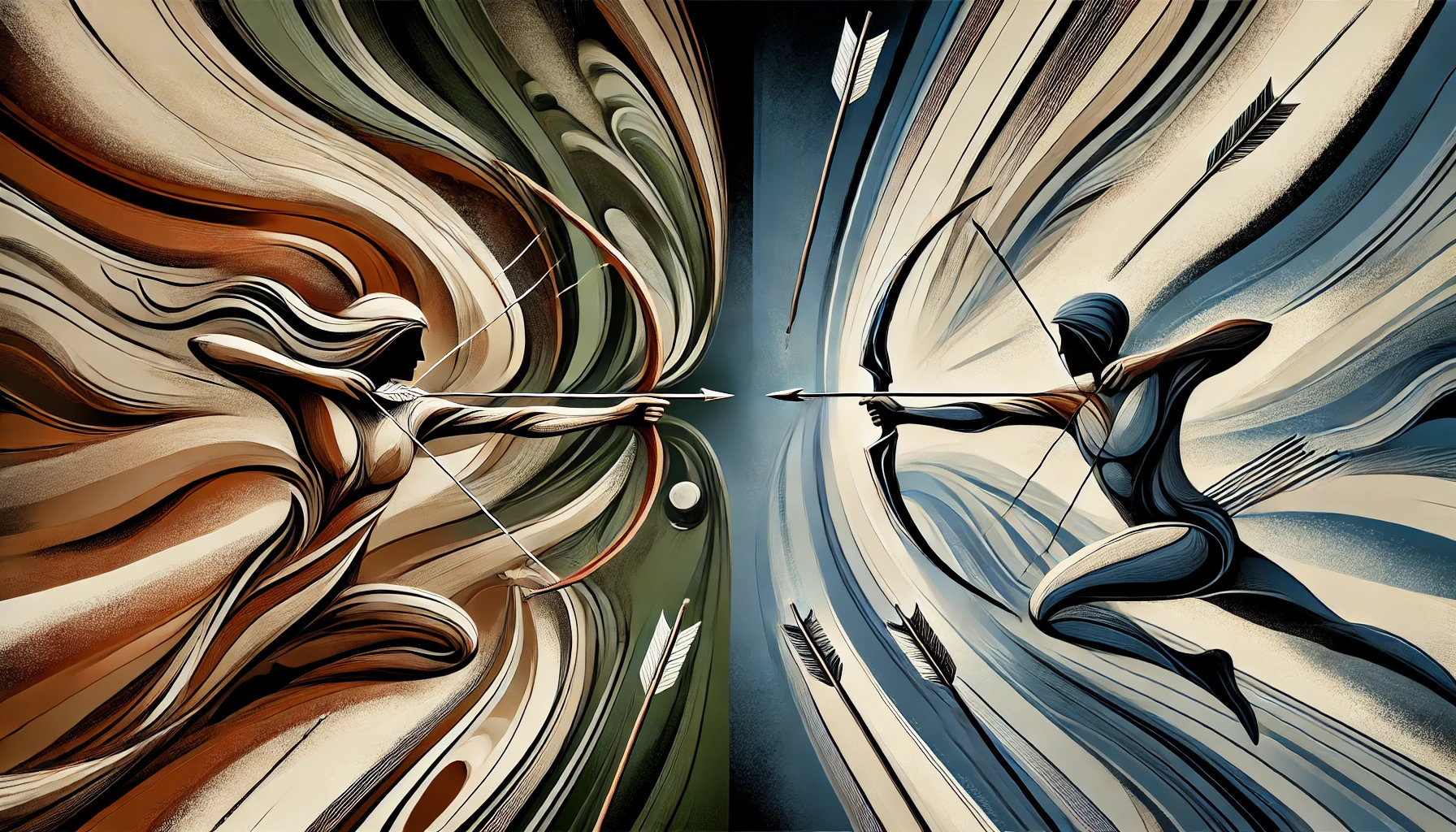It was during the junior championships a few years ago when I witnessed something that forever changed how I viewed archery mastery. The competition itself had wrapped up for the day, and in the spirit of fun, someone suggested a round of archery tag—a chaotic, adrenaline-fuelled game where soft-tipped arrows replace the usual precision shots, and the objective is simple: capture the other team’s flag or hit their targets.
All participants used Rolan Snake bows, shot instinctively. Gone were the clickers, stabilisers, and sight pins. The bows were simple, the format wild and unpredictable. Among the eager archers stood Markus, a junior from our club who usually competed with a recurve. Markus had started his journey as an instinctive longbow shooter, and though his recurve competition performance that day had been middling, this game was another story entirely.
From the first whistle, Markus became a force of nature. While others fumbled with their aim, trying to adapt to instinctive shooting, Markus was already on the move—loosing arrows with fluid precision as if the game were designed for him. One by one, the opposing players were tagged out, some barely seeing the arrow that hit them. Within minutes, the judge—with a laugh in his voice—shouted, “Alright, everyone against Markus!” Even that didn’t even the odds.
It was a brilliant moment—a playful yet profound reminder that archery skills aren’t always about rankings and regulated conditions. In a setting without the familiar structure of the competition arena, Markus’s instincts outshone the trained responses of the competitive archers. And it raised an interesting question: what truly makes an archer “better”?
The Different Faces of Mastery
Competitive archers dedicate countless hours to their craft. They measure their progress with meticulous precision—consistent draw length, perfect posture, and scores that are logged, compared, and refined over months or even years. To perform with grace and unwavering focus under the pressure of official competition is a significant achievement.
But archery is also older than any modern rulebook. Long before there were scoresheets and 70-metre lines, archery was a skill of survival and adaptability. Hunters and instinctive shooters don’t rely on pre-measured distances or perfect conditions—they shoot by feel, reading the environment as much as the target.
To illustrate this adaptability, consider Byron Ferguson, the legendary longbow archer. During a challenge at an indoor range, a compound shooter wanted to test his skill against Byron’s. Ever the showman, Byron changed the rules: once a target was hit—moving or not—it stayed down. Let’s just say the compound archer didn’t stand a chance. It wasn’t about the bow—it was about Byron’s ability to adapt to a different kind of challenge.
So, does excellence come from the controlled mastery of competition or from the ability to adapt when nothing is certain?
Specialisation vs. Adaptability
Markus’s story isn’t unique. Throughout the world, instinctive and recreational archers often thrive when the game changes. The structured approach of competitive archery sharpens a very specific set of skills: repetition, precision, and the ability to handle mental pressure. But in an unpredictable setting—where targets move, distances vary, and the ground is uneven—specialisation can become a limitation.
This isn’t to diminish the achievements of competitive archers—far from it. Their discipline and consistency are unmatched. However, when comparing different contexts, these strengths may be challenged. And in an unpredictable arena, where quick decisions matter more than precise calculations, their controlled technique can sometimes falter.
At this point, it’s important to consider what these shifting dynamics mean for how we perceive mastery.
The Ego Factor
It’s here that things can get tricky. For archers whose self-image is tied to scores and achievements, the idea that someone without formal training could outshoot them in a different context can feel like a challenge to their hard-earned status. This is particularly true in archery communities where competition and ranking systems are held in high esteem.
Yet, perhaps this is where the magic of archery truly lies—in its variety. It’s a reminder that no single context defines mastery. Whether you’re a hunter drawing quietly in the forest, a competitive archer aiming under the scrutiny of a judge, or a recreational shooter simply enjoying the flow of the shot, archery has space for all forms of excellence.
Reframing “Better”
The story of Markus’s triumph in archery tag and the dominance of competitive archers in structured events aren’t about undermining either group. They’re about broadening our view of what makes an archer great. Perhaps it isn’t a question of who is better, but rather who is better in a given moment.
So, whether you’re aiming at a bullseye 70 metres away or loosing an arrow on instinct at a moving target, the challenge remains the same: to stay present, to adapt, and to let the arrow fly true. And if you find yourself outmatched in a spontaneous game of archery tag? Well, remember Markus’s story—and maybe sharpen those instinctive skills.
Because in archery, the best moments often happen when we’re just having fun.





0 Comments